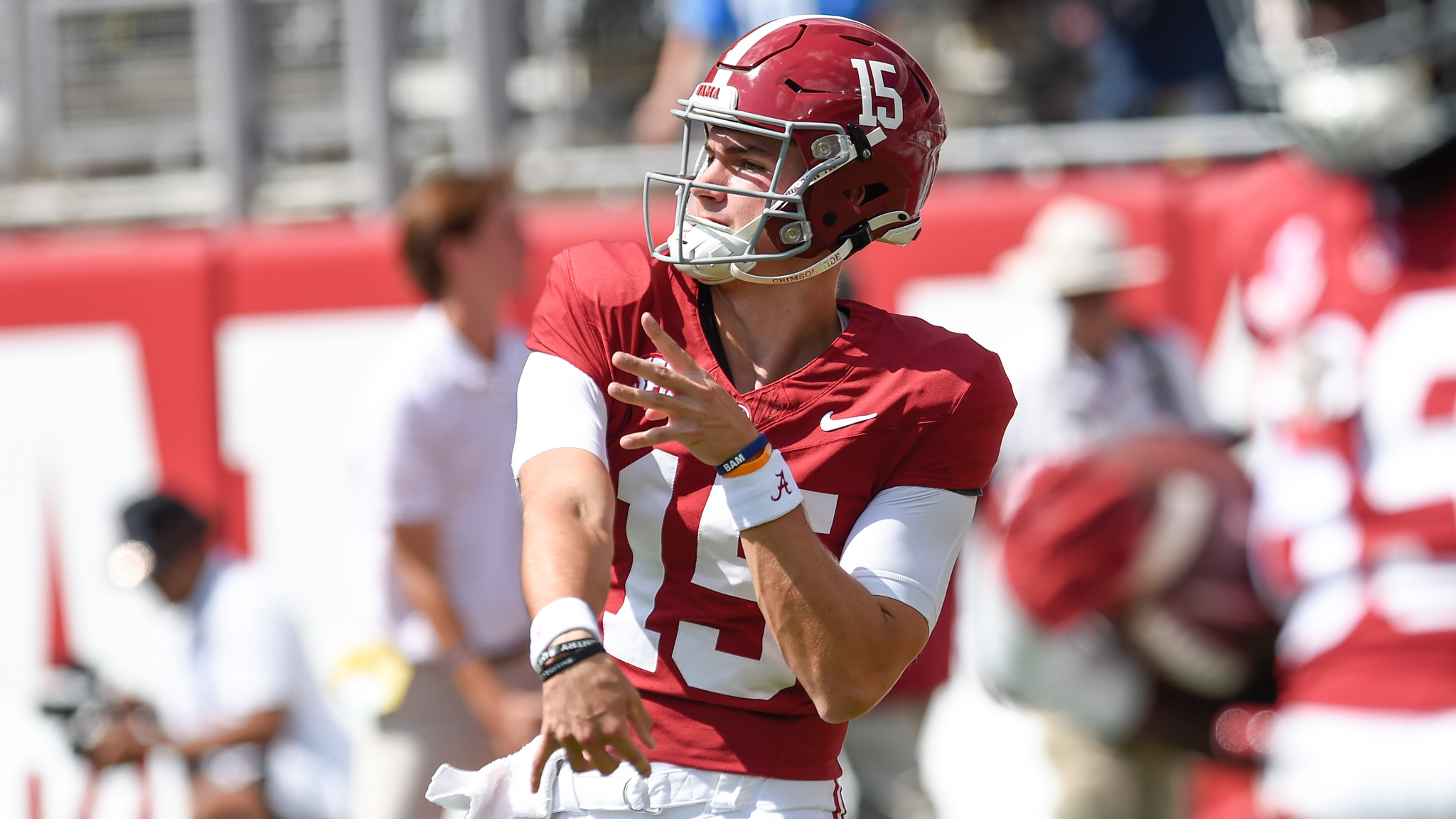Ty Simpson and Kendrick Law having Problem with Kalen DeBoer and other Coaching Staff…..
In a series of events that have sent ripples through the collegiate football community, Ty Simpson and Kendrick Law, two highly touted recruits for the University of Washington, have found themselves at the center of a burgeoning controversy involving head coach Kalen DeBoer and other members of the Huskies’ coaching staff. The discord, rooted in a complex amalgamation of playtime decisions, offensive strategies, and off-field expectations, has cast a shadow over what was anticipated to be a promising season for the Huskies.

The initial fissure appeared to stem from disagreements over offensive game planning and the utilization of Simpson and Law’s talents within the team’s scheme. Simpson, known for his exceptional arm strength and field vision, and Law, celebrated for his agility and versatility, reportedly felt underutilized and constrained by the coaching staff’s strategic choices. This discontent was not about individual accolades but rather a shared belief that their skills were not being maximized for the team’s benefit.
As the season progressed, these strategic disagreements evolved into more personal disputes, with both players expressing concerns over the coaching staff’s communication style and feedback mechanisms. It was not just the what but the how—the manner in which critiques were delivered and the perceived lack of open dialogue that chafed the players. Such issues hinted at a larger cultural mismatch between the young stars and the established coaching ethos under DeBoer.
Complicating matters further were the players’ expectations around mentorship and development. Simpson and Law arrived at Washington with aspirations of refining their skills to an NFL-caliber level, aspirations they felt were being sidelined by a coaching philosophy they perceived as overly conservative or misaligned with their growth trajectories. The tension between short-term team strategy and long-term player development became a sticking point, emblematic of the broader challenges facing college athletics.
Rumors of these disagreements began to surface publicly when cryptic social media posts from both players hinted at dissatisfaction, sparking speculation among fans and media alike. This digital venting, while not directly naming individuals or specific grievances, underscored a generational shift in how athletes communicate and air grievances, bringing an added dimension to the unfolding drama.
The coaching staff, for their part, appeared caught off guard by the extent of the players’ discontent. Publicly, DeBoer and his assistants maintained a united front, emphasizing team unity, the collective goal of winning, and the importance of internal resolution of conflicts. Behind closed doors, however, efforts to reconcile the differing perspectives intensified, with multiple team meetings held to address the simmering tensions.
The University of Washington’s athletic department also found itself under scrutiny, as observers questioned how such issues could have escalated without earlier intervention. The situation highlighted the delicate balance athletic departments must strike in managing the expectations of star athletes while also supporting the coaching staff’s authority and team cohesion.
Amidst the turmoil, the Huskies’ performance on the field began to reflect the off-field distractions. A team that had been predicted to contend for a conference championship found itself struggling to maintain consistency, with losses attributed to uncharacteristic errors and a palpable lack of synchronicity. The correlation between internal discord and on-field performance became a topic of intense discussion among analysts and fans.
Efforts to mediate the conflict included bringing in sports psychologists and former players to speak to the team, aiming to bridge the communication gap and foster a more inclusive and open team environment. These sessions, while helpful, underscored the complexities of managing a diverse group of personalities and the essential role of communication in team sports.
Despite these challenges, moments of brilliance on the field from Simpson and Law served as reminders of their immense talent and potential. When strategies aligned with their abilities, the results were electrifying, offering glimpses of what could be achieved when synergy between players and coaching staff was realized.
Support from teammates also played a crucial role in navigating the season’s ups and downs. Many within the locker room voiced support for both the coaching staff and their fellow players, advocating for unity and understanding. This internal support system became crucial as the team sought to salvage its season and rebuild the trust that had been eroded.
The broader collegiate football community watched closely, recognizing the situation at Washington as indicative of larger trends within the sport. The balance of power between highly recruited athletes and traditional coaching hierarchies, the role of social media in athlete expression, and the evolving dynamics of player development and team strategy were all themes illuminated by the Huskies’ tumultuous season.
As the season drew to a close, the focus began to shift towards reconciliation and moving forward. Both Simpson and Law, through their experiences, became vocal leaders on the importance of communication, resilience, and mutual respect within a team context. Their journey from discontent to advocates for team cohesion marked a significant evolution in their roles within the team and the larger athletic community.
For DeBoer and his coaching staff, the season offered valuable lessons in managing the modern athlete, the importance of adaptability in coaching philosophies, and the critical role of transparent communication in building a successful program. The experiences of the season, while challenging, provided a foundation for future growth and success.
In the end, the saga of Ty Simpson, Kendrick Law, and the Washington Huskies served as a compelling case study in the complexities of collegiate athletics, highlighting the challenges and opportunities inherent in the dynamic relationship between talented young athletes and the coaching staffs tasked with guiding them to their full potential.
Leave a Reply